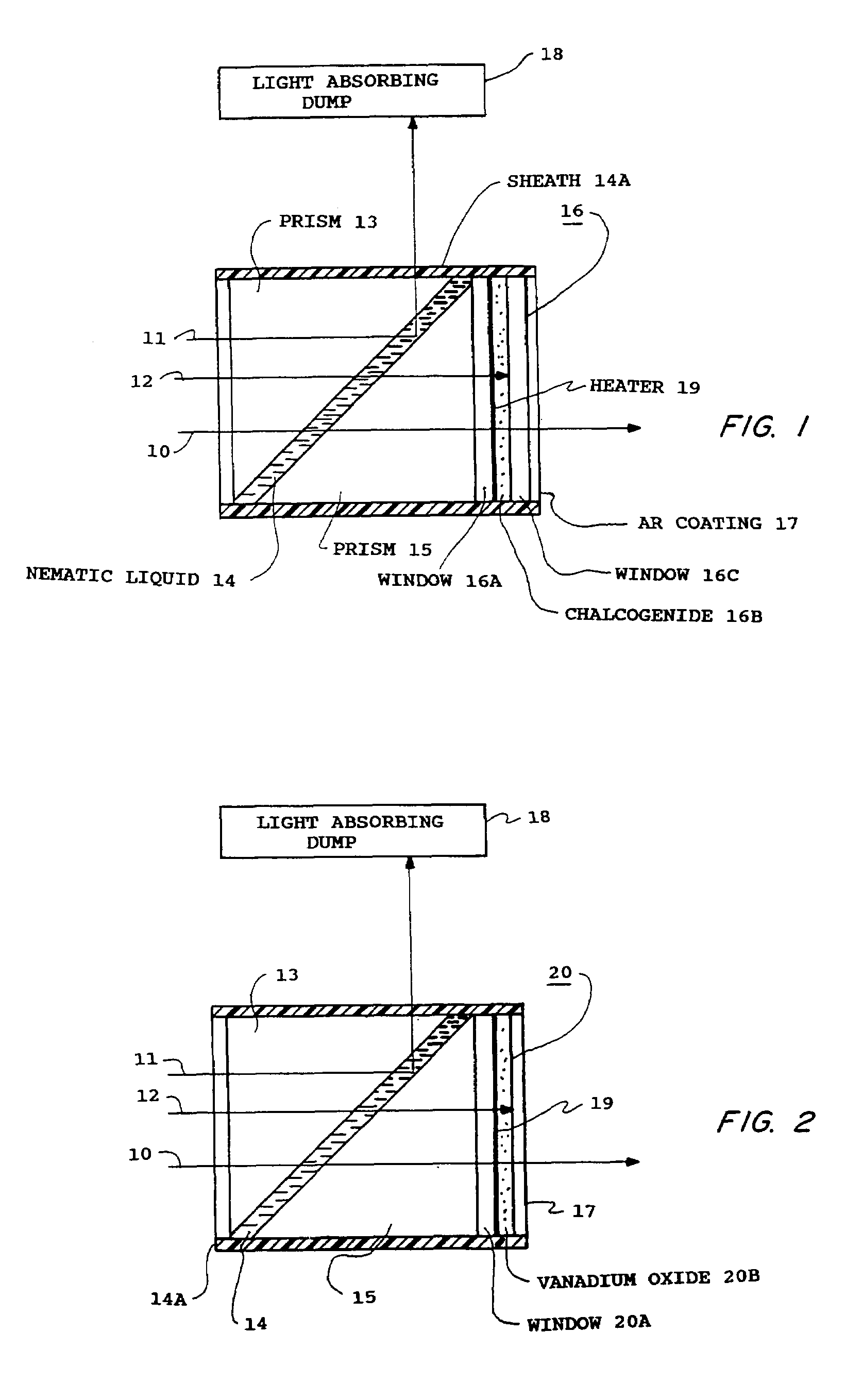Optical power switch
a power switch and optical radiation technology, applied in the field of optical radiation limiters, can solve the problems of low dynamic range of protective devices made from these materials, high vulnerability to damage, and inability to fully protect detector materials, etc., and achieve low switching threshold, low dynamic range, and low resistance.
- Summary
- Abstract
- Description
- Claims
- Application Information
AI Technical Summary
Benefits of technology
Problems solved by technology
Method used
Image
Examples
Embodiment Construction
[0009]FIG. 1 shows a detailed view of a first embodiment of applicant's novel protective device. This device utilizes a high power limiter such as one disclosed in an earlier application entitled Frustrated Total Internal Reflection Power Limiter, Ser. No. 648,140 filed 5 Sep. 1984. As disclosed in that application, the limiter must be located at an intermediate focal point, which can be created by adding beam folding mirrors to a first generation FLIR, but which is an integral feature of second generation FLIRS. A similar device is disclosed in Ser. No. 268,461 “Optical Power Limiter Utilizing Nonlinear Refraction”, filed 1 Nov. 1989 by Gary L. Wood, et al. The operation of the components, 13, 14, 15, and 17 are essentially described in the earlier patent applications. For example, a low / intensity ray 10, representing ambient IR levels at which the FLIR detector is designed to operate is transmitted undeviated and substantially unattenuated through the protective limiter device. Th...
PUM
 Login to View More
Login to View More Abstract
Description
Claims
Application Information
 Login to View More
Login to View More - R&D
- Intellectual Property
- Life Sciences
- Materials
- Tech Scout
- Unparalleled Data Quality
- Higher Quality Content
- 60% Fewer Hallucinations
Browse by: Latest US Patents, China's latest patents, Technical Efficacy Thesaurus, Application Domain, Technology Topic, Popular Technical Reports.
© 2025 PatSnap. All rights reserved.Legal|Privacy policy|Modern Slavery Act Transparency Statement|Sitemap|About US| Contact US: help@patsnap.com


